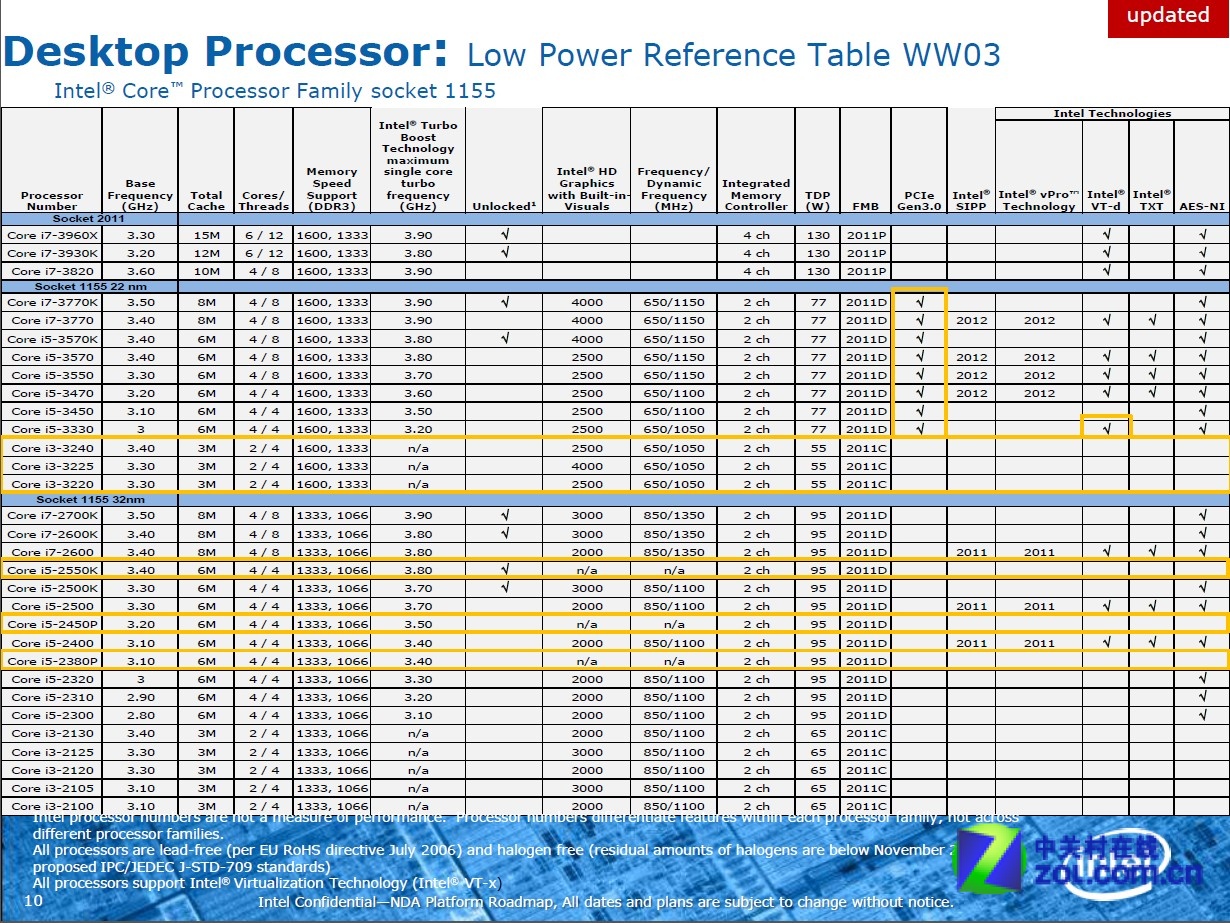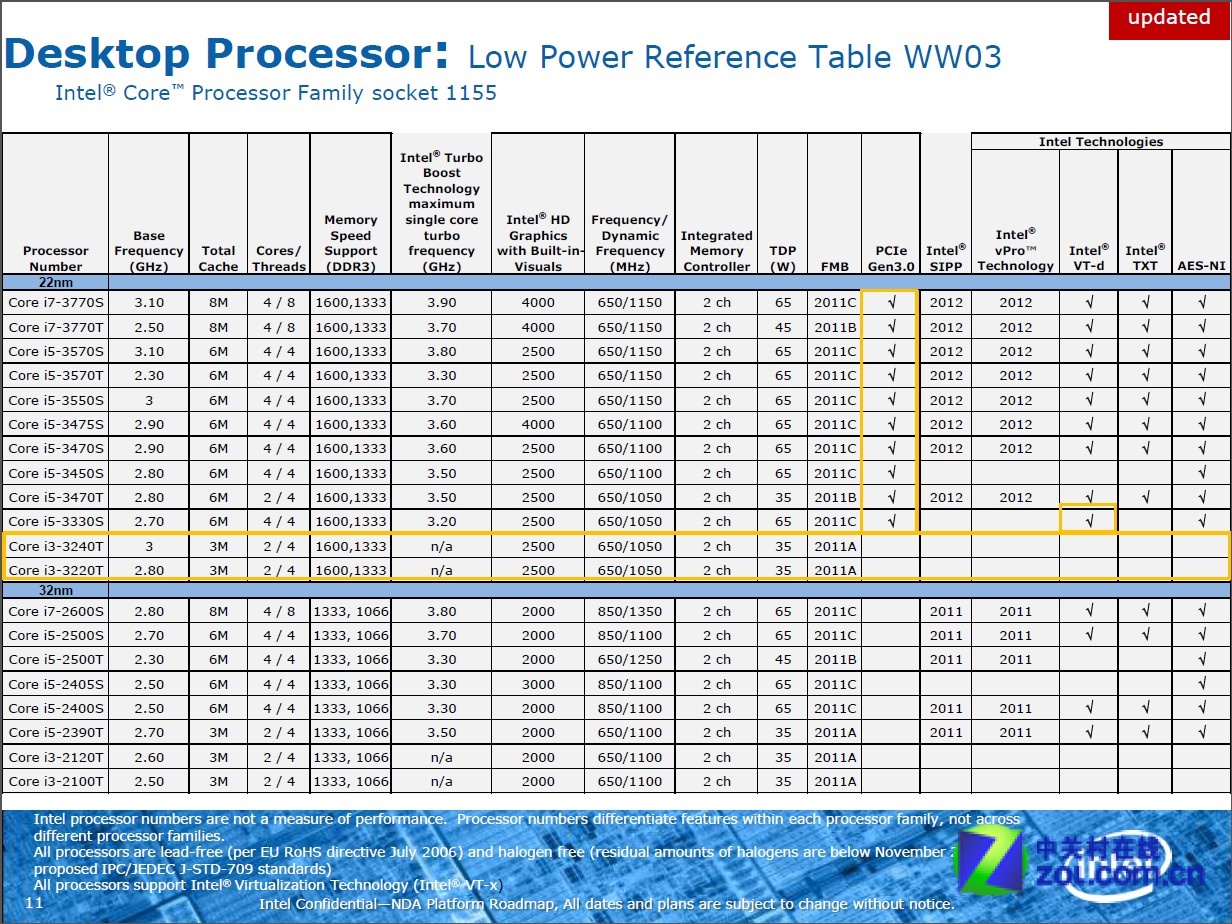Those are not aspiring for the high-end segment of the processor market might want to check out the latest leaked slides that cover Intel’s coming Core i3 processors. What we see is that Intel has no intentions of applying its latest technologies to the budget segment.
The launch of Ivy Bridge will happen on April 8th, and the processors in the lower segment are not slated to appear until May. This is in Intel’s Core i3 that has appeared on new slides, which will bring a marginal boost from the models they replace. Intel has made sure Core i3 remains in the lower segment by deactivating some features.
 |
 |
| Model | Core i3-3220T | Core i3-3240T | Core i3-3220 | Core i3-3240 | Core i3-3225 | Core i5-3570K | Core i7-3770K |
| Cores | 2 | 2 | 2 | 2 | 2 | 4 | 4 |
| Threads | 4 | 4 | 4 | 4 | 4 | 4 | 8 |
| Frequency | 2.8 GHz | 3.0 GHz | 3.3 GHz | 3.4 GHz | 3.3 GHz | 3.4 GHz | 3.5 GHz |
| Turbo | Not Available | 3.8 GHz | 3.9 GHz | ||||
| L3 cache |
3 MB | 6 MB | 8 MB | ||||
| Memory support |
DDR3-1333/1600 | ||||||
| Graphics | Intel HD 2500 | Intel HD 4000 | |||||
| Graphics frequency |
650 MHz/1050 MHz Turbo | 650/1150 MHz Turbo |
|||||
| PCI Express | 2.0 | 3.0 | |||||
| TDP | 35W | 35W | 55W | 55W | 55W | 77W | 77W |
Its Core i3 processors lack Turbo Boost just like today, with Sandy Bridge. Also VT-d (virtualization) and TXT (security function) have been removed, but what really stands out is the lack of PCI Express 3.0. This means you will have to get Core i5 or Core i7 if you want PCIe 3.0.
There is a model that stands out, which follows Core i3-2125 – namely Core i3-3225. The number 5 at the end implies it sports Intel’s GT2 graphics, or HD 4000 that is expected to perform like AMD A6 or A8 models. It remains at 55W TDP, which is not bad, but we would rather see a model with 35W TDP.
Source: Zol




















” It remains at 55W TDP, which is not bad, but we would rather see a model with 35W TDP.”
——
A bit of an ill-informed criticism, I think. The 3225 sees a ten watt reduction in TDP from the Sandy Bridge-based 2125, its predecessor, which was rated at 65 watts. The laws of physics apply here, you know; there’s only so much increased efficiency that can be squeezed out of a die shrink. The ivy bridge chips rated at 35 TDP are running significantly reduced clock speeds than the 3225. Anything lower is going to require a new microarchitecture.